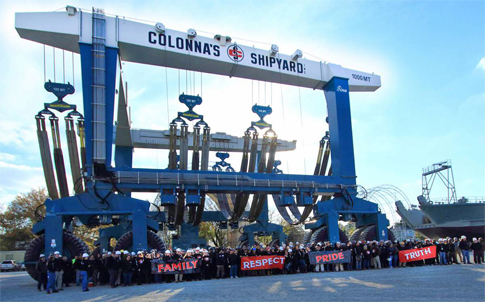Body
Sponsored Content
Although more than 140 years old, Colonna’s Shipyard Inc. has not stood still with respect to modernization. Colonna’s has made the capital investments necessary to improve efficiency and productivity—and those investments are paying off.
|
ADVERTISEMENT |
During the late 1990s, Steel America (SA), a division of Colonna’s, branched off to meet market demands for industrial plant expansions and other onshore fabrication projects.

…
Want to continue?
Log in or create a FREE account.
By logging in you agree to receive communication from Quality Digest.
Privacy Policy.
Add new comment